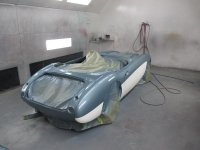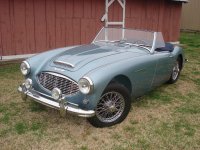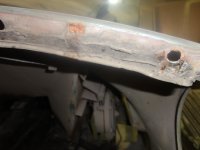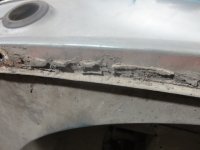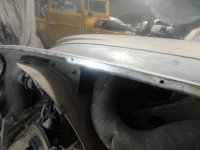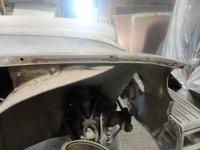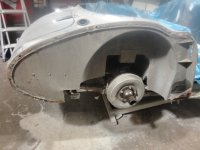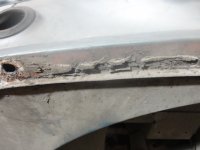Guys,
I am getting ready to have my car painted. I have all of the fenders mounted back on the car, with the screws that hold them onto the car hand tight.
I was planning on painting the car with the corner bead off of the car, and the fenders left loose. I would install the corner bead and "final" tighten the fender screws after the car was painted.
The plan sounded good, but the painter pointed out that any residual paint or clear coat that dripped down in between the fender and shroud would make the 2 stick together after the clear hardens.... making it very difficult to separate the fender/ shroud to insert the tabs that hold the corner bead in place.
Should I put some type of shims in between the 2 pcs to separate them? I was concerned that the shims might get stuck.
Has anyone had experience with this? Any suggestions are really appreciated.
Thank you
I am getting ready to have my car painted. I have all of the fenders mounted back on the car, with the screws that hold them onto the car hand tight.
I was planning on painting the car with the corner bead off of the car, and the fenders left loose. I would install the corner bead and "final" tighten the fender screws after the car was painted.
The plan sounded good, but the painter pointed out that any residual paint or clear coat that dripped down in between the fender and shroud would make the 2 stick together after the clear hardens.... making it very difficult to separate the fender/ shroud to insert the tabs that hold the corner bead in place.
Should I put some type of shims in between the 2 pcs to separate them? I was concerned that the shims might get stuck.
Has anyone had experience with this? Any suggestions are really appreciated.
Thank you

 Hi Guest!
Hi Guest!

 smilie in place of the real @
smilie in place of the real @
 Pretty Please - add it to our Events forum(s) and add to the calendar! >>
Pretty Please - add it to our Events forum(s) and add to the calendar! >> 

